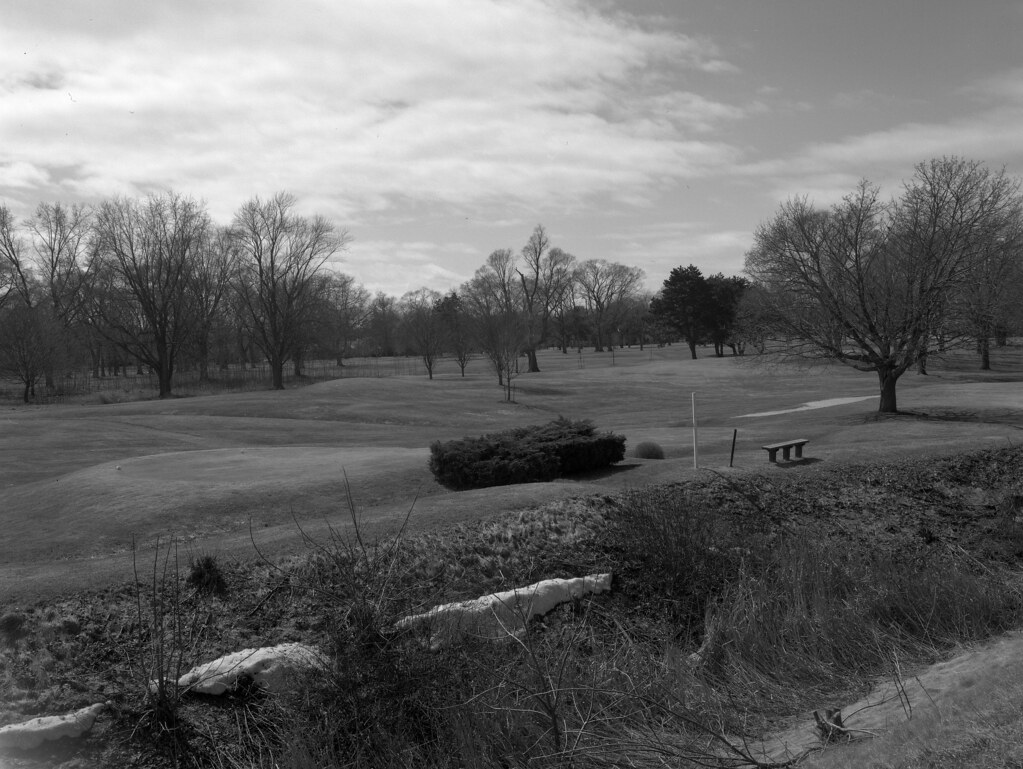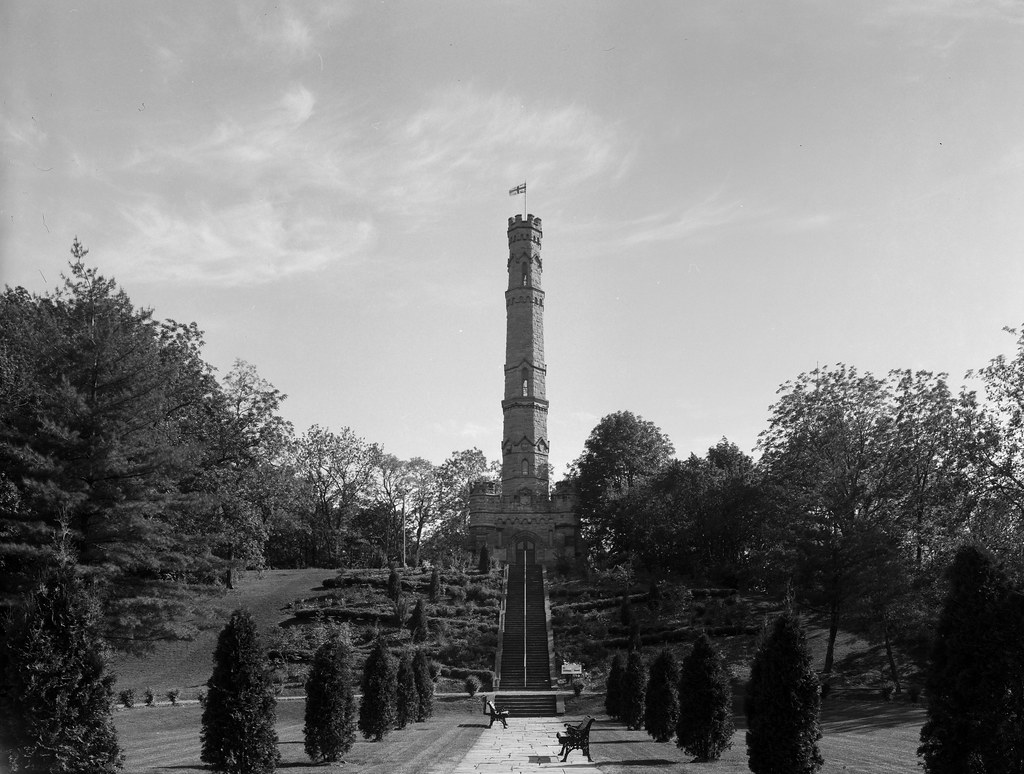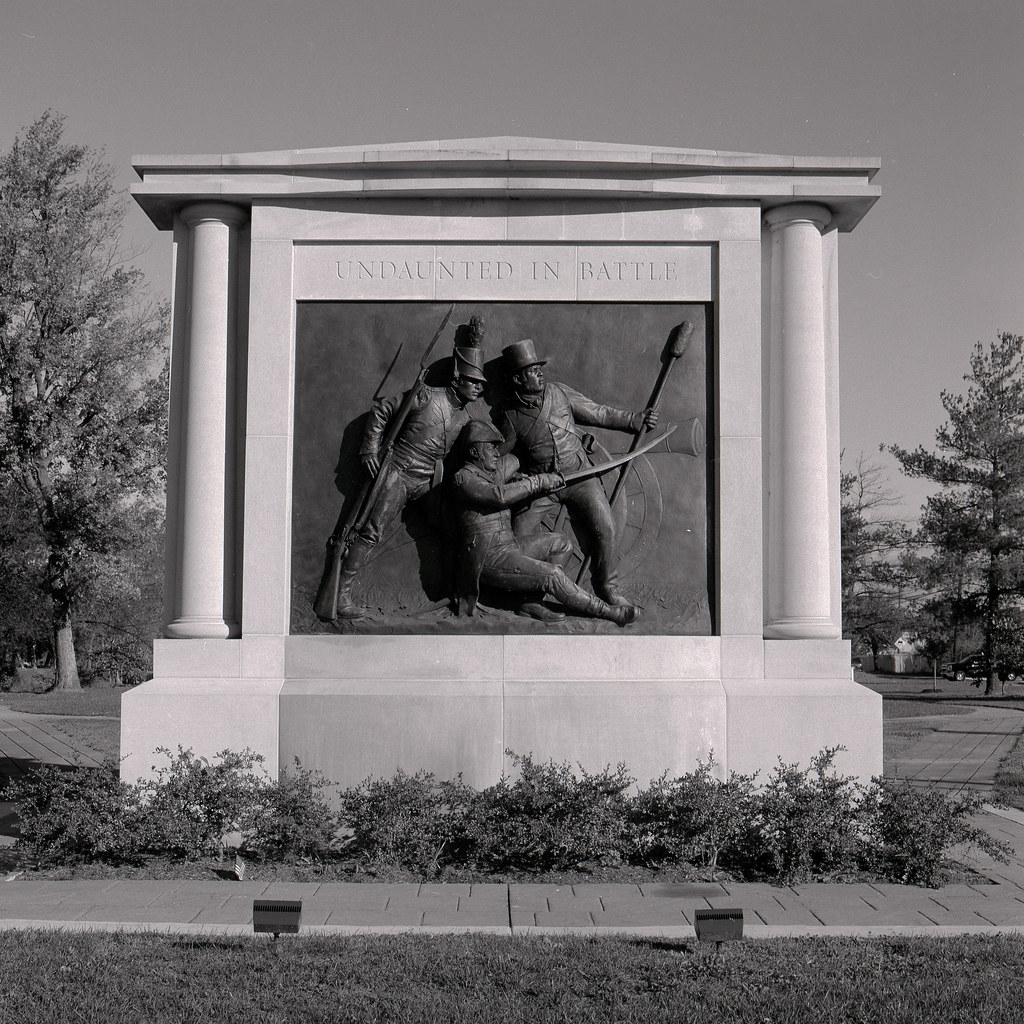Brigadier General William H Winder, like many officers in the American Army, made a name for himself in the War of 1812, and I don’t mean that in a good way. Winder has been grouped by many in the same category as William Hull and is considered one of the worst generals of the war. The ill-starred general was born in 1775 near Baltimore, Maryland, Winder wound attend the University of Pennsylvania and study law and return to Baltimore and began to practice law in 1798 and earned a reputation for being one of the best lawyers in the entire state.

The battle field from the capture of Fort George, now a Golf Course in Niagara-On-The-Lake.
Modified Anniversary Speed Graphic – Fuji Fujinon-W 1:5.6/125 – Fuji Neopan Acros 100 @ ASA-100 – Kodak Tmax Developer (1+4) 5:30 @ 20C
Winder, being the nephew of the governor of Maryland was granted a commission of colonel when the war with England began in 1812, and he would be sent to the Niagara Frontier to join the shattered army, repulsed at Queenston Heights. The new commander of the army, General Alexander Smyth had his designs for the invasion of Upper Canada, and in November that same year Winder would command a relief force that was sent to rescue the trapped American soldiers and escape under fire from the British army who attacked Winder’s brigade at Frenchman’s Creek. General Smyth would be dismissed and would earn Winder a promotion to Brigadier General. When the American invaded again in the spring of 1813 Winder joined Dearborn’s army forcing the British army to fall back to Burlington Heights. Winder would join the occupation and lead a division to occupy the Gage Farm at Stoney Creek. In the resulting night assault by the British Winder found himself a prisoner of the British.

The monument to the Battle of Stoney Creek which saw both American generals taken prisoner.
Modified Anniversary Speed Graphic – Fuji Fujinon-W 1:5.6/125 – Ilford Ortho Copy Plus @ ASA-40 – PMK Pyro (1+2+100) 12:00 @ 20C
The general’s capture was a cause of great concern with news of poor treatment of American prisoners littered the newspapers. And much to their relief, Winder was exchanged in the summer of 1814 and returned home to Baltimore. When news of a British invasion reached Washington DC, President Madison and Secretary of War, John Armstrong created the 10th military district to defended the capital, and to the annoyance of Armstrong, President James Madison appointed General Winder to the post of commander of the new district. The President’s choice resulted in bad blood between Winder and Armstrong. While Winder did the minimum to inspect the area’s fortifications and militia troops he received little logistical support from the government. When the British landed in August 1814, Winder had to struggle to call up the area’s militia and divide the force as the British plans remained unclear. When Ross attacked, Winder out of fear moved back thinking that Ross would launch a night assault. Winder’s fear would spread, and when he arrived at Bladensburg, he found that the general there had given up a tactically sound position. And when Ross attacked, Winder was unable to control the retreat left the door open to Washington DC.

The new memorial to the Battle of Bladensburg in Bladensburg, Maryland.
Hasselblad 500c – Carl Zeiss Planar 80mm 1:2.8 – Kodak TMax 100 @ ASA-100 – Blazinal (1+25) 6:00 @ 20C
The defeat at Bladensburg and destruction of Washington would be laid squarely at Armstrong’s and Winder’s feet, while Armstrong would resign his post, Winder retained his commission but would never hold a senior command for the rest of the war, spending it on the Niagara frontier. After the war was over, he would return to Baltimore requesting a court of inquiry in an attempt to clear his name. The court would only give him the vague judgment that he was worthy of a better fate. Resigning his commission, Winder would return to his law practice. But the war had broken his health but not his spirit. He would go on to serve twice on the Senate of Maryland, and at the time of his death at the age of 42, his firm was one of the largest in Baltimore. His remains would be laid to rest at Greenmount Cemetary.

General Winder’s grave at Greenmont Cemetary in Baltimore, Maryland.
Hasselblad 500c – Carl Zeiss Planar 80mm 1:2.8 – Kodak Tri-X 400 @ ASA-400 – Kodak D-23 (Stock) 7:30 @ 20C
Written with Files from:
Mayer, Brantz. Baltimore: Past and Present, with Biographical Sketches of Its Representative Men. Baltimore: Richardson & Bennett, 1871. Print.
Web: casebook.thewarof1812.info/People_files/Winder/people_summary.html
Web: www.geni.com/people/Brig-General-William-Henry-Winder-USA/6000000000907794457